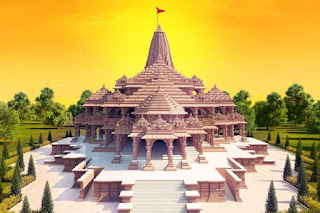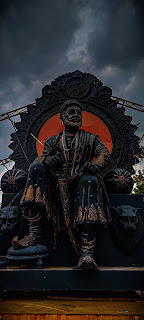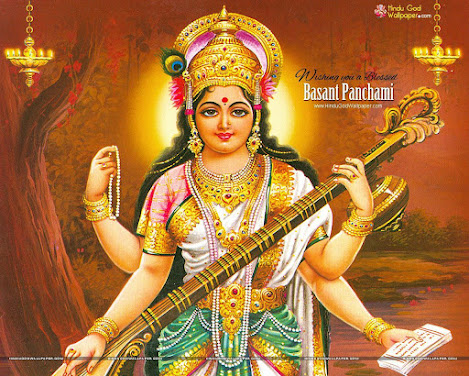Shree Ram Mandir - Ayodhya '24
The Ram Mandir is a Hindu tabernacle under construction in
Ayodhya, Uttar Pradesh, India. It's located at the point of Ram Janmabhoomi,
the hypothecated motherland of Rama, a top deity of Hinduism. The point is the
former position of the Babri Masjid which was erected in 16th century CE after
the obliteration of an being non-Islamic structure. The icons of Rama and Sita
were placed in the synagogue in 1949, before it was attacked and demolished in
1992. In 2019, the Supreme Court of India delivered the verdict to give the
disputed land to Hindus for construction of a tabernacle, while Muslims would
be given land away to construct a synagogue. The court substantiated a report
from the Archaeological Survey of India (ASI) as substantiation suggesting the
presence of a structure beneath the demolished Babri Masjid, that was set up to
be non-Islamic. still, ASI claims were heavily disputed by critics as
antithetical, dubious, and being the product of nationalistic manipulation. The
bhumi pujan for the inception of the construction of Ram Mandir was performed
on 5 August 2020, by Prime Minister Narendra Modi. The tabernacle, presently
under construction, is being supervised by the Shri Ram Janmabhoomi Teerth
Kshetra Trust. The prana pratishtha of the tabernacle is listed for 22 January
2024. The tabernacle has attracted a number of difficulties due to contended
abuse of donation, sidelining of its major activists and politicisation of the tabernacle
by the Bharatiya Janata Party. Rama, an manifestation of Vishnu, is a Hindu
deity. According to the ancient Indian epic, Ramayana, Rama was born in
Ayodhya. In the 16th century, the tabernacle was attacked and destroyed by
Babur in his series of tabernacle raids across northern India. latterly, the
Mughals constructed a synagogue, the Babri Masjid, which is believed to be the
point of the Ram Janmabhoomi, the motherland of Rama. The foremost record of
the synagogue may be traced back to 1767, in the Latin book Descriptio Indiae,
penned by the Jesuit missionary Joseph Tiefenthaler. According to him, the
synagogue was constructed by destroying
the Ramkot tabernacle, believed to be
the fort of Rama in Ayodhya, and the
Bedi, where the motherland of Rama
is positioned. The first case of
religious violence was proved in 1853.
In December 1858, the British administration banned Hindus from conducting
puja( rituals) at the queried point. A platform was created for conducting
rituals outside the synagogue . The murtis of Rama and Sita were installed
inside the Babri Masjid on the night of 22 – 23 December 1949 and the addicts
began to gather from the coming day. By 1950, the state took control of the
synagogue under section 145 CrPC and
allowed Hindus, not Muslims, to perform their
deification at the point. In the
1980s, the Vishwa Hindu Parishad( VHP), belonging to the Hindu nationalist
family, Sangh Parivar, launched a new movement to reclaim the point for Hindus and to erect a tabernacle
devoted to the child Rama (Ram
Lalla) at this spot. The VHP began to collect
finances and bricks with" Jai Shri Ram" written on them.
latterly, the government under Prime Minister Rajiv Gandhi gave the VHP authorization for Shilanyas to do, with the
also Home Minister, Buta Singh, formally conveying the authorization to the VHP leader, Ashok
Singhal. originally, the Government of India and Government of Uttar Pradesh
had agreed that the shilanyas would be conducted outside of the disputed point. still, on 9 November 1989, a group of
VHP leaders and Sadhus laid the foundation gravestone by digging a 200- litre(
7-boxy- bottom) hole
conterminous to the disputed land. The singhdwar( transl. main entrance)
of the sanctum sanctorum was constructed there. The VHP also laid the foundations of a tabernacle on the land conterminous to the disputed synagogue . Two
archaeological excavations in 1978 and 2003 conducted by the Archaeological
Survey of India( ASI) set up substantiation indicating that the Hindu tabernacle's remains was on the
point. ArchaeologistK.K. Muhammed
indicted several left- leaning chroniclers
of undermining the findings. Over the times,
colorful title and legal
controversies took place, similar
as the passage of the Acquisition of Certain Area at Ayodhya Act in 1993. In
2010, the Allahabad High Court ruled that the2.77 acres(1.12 ha) of disputed
land be divided into 3 corridor, with
1⁄3 going to the Ram Lalla or Infant Lord Rama represented by the Hindu
Mahasabha for the construction of the Ram
tabernacle, 1⁄3 going to the Muslim Sunni Waqf Board and the remaining
1⁄3 going to a Hindu religious
denotation Nirmohi Akhara. All the three parties involved appealed
against the division of disputed land to the Supreme Court. In Supreme Court's
verdict on the Ayodhya disagreement in
2019, it was decided that the disputed land would be handed over to a trust
formed by the Government of India for the construction of a Ram tabernacle. The trust was ultimately formed under the name of the Shri
Ram Janmabhoomi Teerth Kshetra. On 5 February 2020, it was blazoned in the Parliament of India that the
government under Prime Minister Narendra Modi had accepted a plan to construct
the tabernacle. Two days latterly, on 7 February, five acres of land
were allocated for a new synagogue to
be erected 22 km (14 mi) down from
Ayodhya in Dhannipur vill. The original
design for Ram Mandir was cooked in 1988 by the Sompura family of Ahmedabad.
The Sompuras have contributed to the design of over 100 tabernacles worldwide for at least 15
generations, including the Somnath
tabernacle. The principal mastermind of the tabernacle was Chandrakant Sompura, supported by his two sons, Nikhil Sompura and
Ashish Sompura, who are also engineers. A new design, with some changes from
the original, was prepared by the Sompuras in 2020, per the Hindu textbooks, the Vastu shastra and the Shilpa
shastras. The tabernacle will be 76
metres (250 ft) wide, 120 metres( 380 ft) long and 49 metres( 161 ft) high.
Once complete, the tabernacle complex
will be the world's third largest Hindu
tabernacle. It's designed in the Gurjara- Chaulukya style of Nagara
style armature, a type of Hindu
tabernacle armature set up
primarily in northern India. A model of the proposed tabernacle was showcased during the Prayag
Kumbh Mela in 2019. The tabernacle's
main structure will be erected on a
raised platform with three storeys. It'll have five mandapas in the middle of
the garbhagriha( sanctum sanctorum) and on the entrance passage. Three mandapas
on one side shall be of Kudu, Nritya and Rang, and the two mandapas on the
other side will be of Kirtan and Prarthana. In Nagara style, the mandapas are
to be decorated with shikhara. The
structure will have a aggregate of 366 columns. The columns will have
16 icons
each to include the embodiers of
Shiva, the 10 Dashavataras, the 64 Chausath Yoginis, and the 12 embodiers of the goddess Saraswati. The range of the stairs will be 16 bases(4.9 m). Per Holy Writ
devoted to the design of
tabernacles devoted to Vishnu,
the sanctum sanctorum will be octagonal. The
tabernacle will be erected in 10
acres(0.040 km2), and 57 acres(0.23 km2) of land will be developed into a
complex with a prayer hall, a lecture hall, an educational installation and other installations including a gallery and a
cafeteria. According to the tabernacle
commission, over 70,000 people will be
suitable to visit the point.
Larsen & Toubro offered to oversee the design and construction of the tabernacle free of cost, and came the
contractor of the design. The Central
Building Research Institute, National Geophysical Research Institute and the
Bombay, Guwahati and Madras IITs are
aiding in areas similar as soil
testing, concrete and design. The construction work will be fulfilled with 600,000 cu ft( 17,000 m3) of
sandstone from Baansi in Rajasthan. There will be no use of iron in the
construction of the tabernacle, and the
fusing of the gravestone blocks will bear ten thousand bobby plates. In a
culturally significant move, Thailand is also symbolically contributing to
the induction of the Ram Mandir, by transferring soil to the Ram Janmabhoomi, erecting on their previous gesture of transferring water from two gutters in
Thailand to recognize the tabernacle. The Shri Ram Janmabhoomi Teerth
Kshetra trust began the first phase of construction of the Ram Mandir in March
2020. The COVID- 19 epidemic lockdown in India caused a temporary suspense of the construction. On 25 March 2020,
Ram's hero was moved to a temporary position in the presence of the Chief
Minister of Uttar Pradesh, Yogi Adityanath. In medication for the tabernacle's construction, the Vishwa Hindu
Parishad( VHP) organised a' Vijay Mahamantra Jaap Anushthan', in which individualities would gather at different
places to chant the' Vijay Mahamantra' – Shri Ram, Jai Ram, Jai Jai Ram, on 6
April 2020. This was said to
insure" palm over hurdles" in constructing the tabernacle. It has been officially blazoned that 22 January 2024 is the slated date for the installation of the Lord
Ram hero in the garbhagriha( sanctum
sanctorum) by Champat Rai, the General Secretary of the Sri Ram Janmbhoomi
Kshetra Trust. Prime Minister Narendra Modi, on 25 October 2023, was extended a
formal assignation to attend the form.
During the 2021 Republic Day cortege on
Rajpath, Uttar Pradesh's tableau showcased a replica of the Ram Mandir. In
October 2023, Durga puja fests in
Santosh Mitra Square, Kolkata displayed a replica of Ram Mandir, along with
other notable structures around the
world. It has been a symbol of stopgap and it has come a part of fests, and has also come a part of stage- up comedy, jokes and memes. In 2019,
the watchword was used in the Parliament
of India, and it has also been used by media houses. The watchword has been used as a trouble as well as a oath.




Comments
Post a Comment